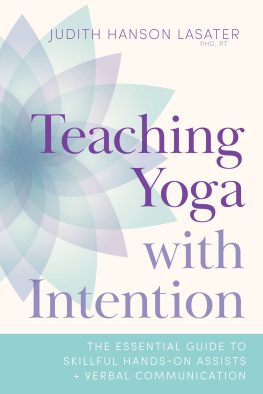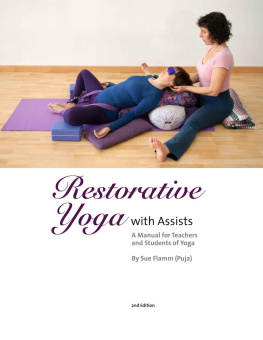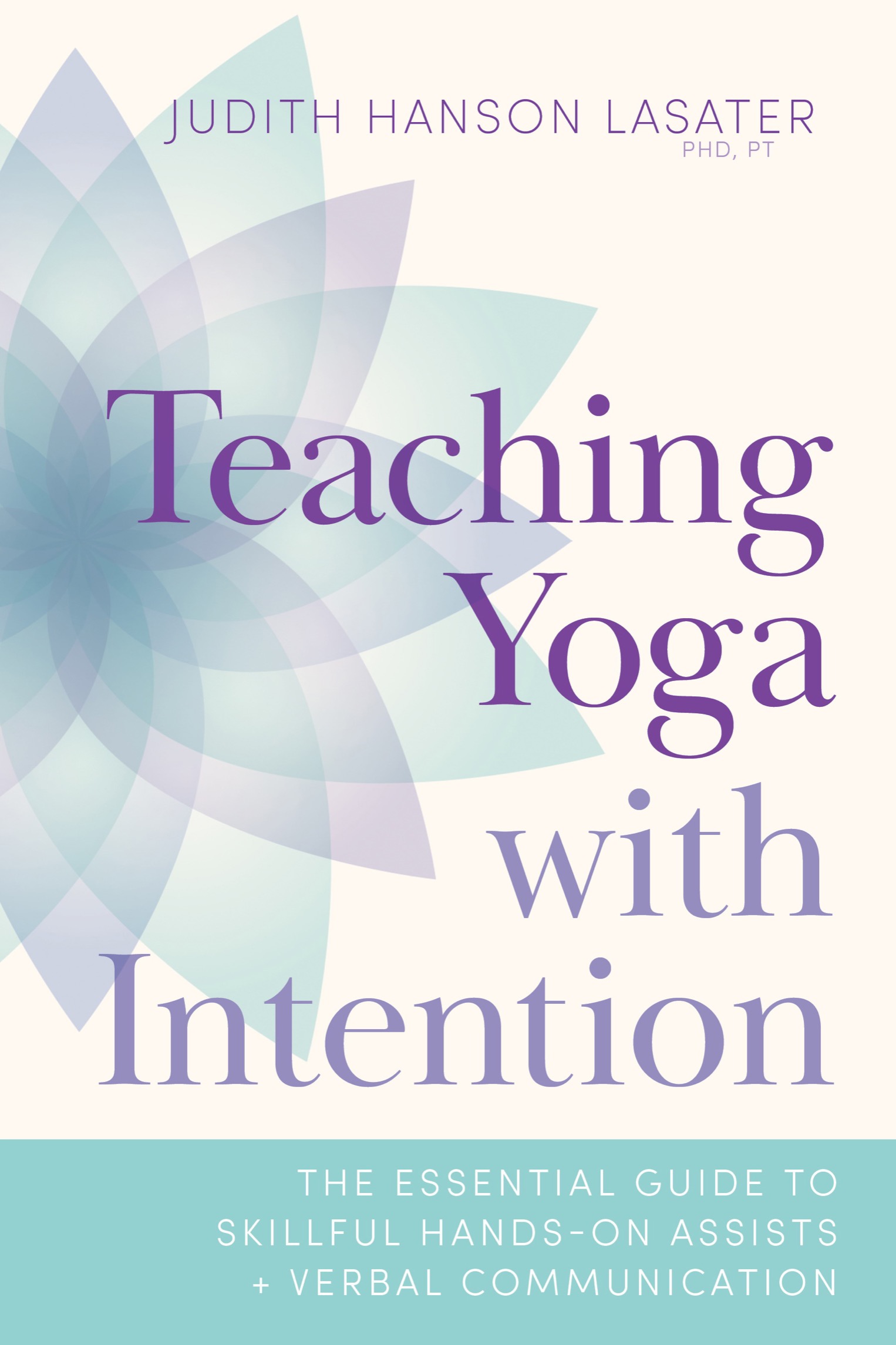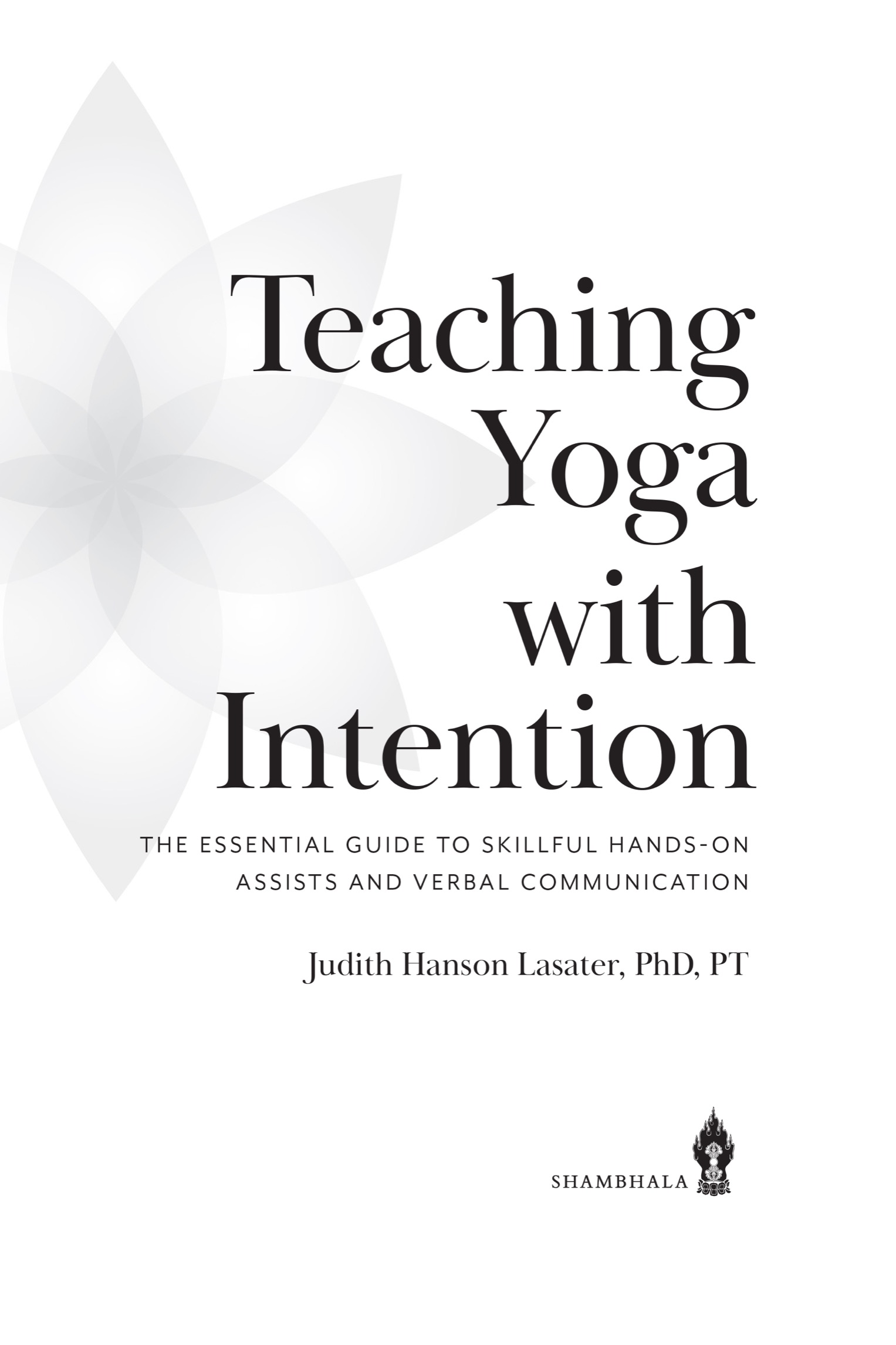Also by Judith Hanson Lasater
30 Essential Yoga Poses: For Beginning Students and Their Teachers
Living Your Yoga: Finding the Spiritual in Everyday Life
Relax and Renew: Restful Yoga for Stressful Times
Restore and Rebalance: Yoga for Deep Relaxation
What We Say Matters: Practicing Nonviolent Communication
A Year of Living Your Yoga: Daily Practices to Shape Your Life
Yoga Abs: Moving from Your Core
Yoga Myths: What You Need to Learn and Unlearn for a Safe and Healthy Yoga Practice
Yoga for Pregnancy: What Every Mom-to-Be Needs to Know
Yogabody: Anatomy, Kinesiology, and Asana
Shambhala Publications, Inc.
2129 13th Street
Boulder, Colorado 80302
www.shambhala.com
2021 by Judith Hanson Lasater
Illustrations by Wren Polansky
Cover art: Alex Hennig
Cover design: Alex Hennig
Interior design: Gopa & Ted2, Inc.
All rights reserved. No part of this book may be reproduced in any form or by any means, electronic or mechanical, including photocopying, recording, or by any information storage and retrieval system, without permission in writing from the publisher.
For more information please visit www.shambhala.com.
Shambhala Publications is distributed worldwide by Penguin Random House, Inc., and its subsidiaries.
Library of Congress Cataloging-in-Publication Data
Names: Lasater, Judith, author.
Title: Teaching yoga with intention: the essential guide to skillful hands-on assists and verbal communication / Judith Hanson Lasater. Description: First edition. | Boulder: Shambhala, 2021.
Identifiers: LCCN 2020056138 | ISBN 9781611809374 (trade paperback)
eISBN 9780834844056
Subjects: LCSH : YogaStudy and teaching. | TouchPsychological aspects. | Communication in education.
Classification: LCC RA781.67 .L36 2021 | DDC 613.7/046dc23
LC record available at https://lccn.loc.gov/2020056138
a_prh_5.8.0_c0_r1
For all the yoga teachers I have had the pleasure to know and the honor to teach
Contents
Acknowledgments
One of the most enjoyable things about writing a book is having the chance to formally thank the many people who have helped me to create it.
First, I would like to acknowledge with deep appreciation the students from all over the world who have studied with me since 1971. You have allowed me the privilege of teaching you. You have allowed me to show you some new and sometimes unusual approaches to yoga practice. You have laughed at jokes that were only sometimes funny. But best of all, you have stuck with me through all the ups and downs of your lives and mine, returning to classes after many life events.
I have learned so much from you. Manyif not allof the things I caution the readers of this book to avoid I have learned by not avoiding them when I was teaching you. I offer a deep and abiding Namaste for your patience, your sense of humor, and your dedication to this yoga we all love so well.
I would like to thank my team at Shambhala Publications, beginning with my editor, Beth Frankl. She has been a great companion as we shaped and refined this book. This is our second book together, but I certainly hope it will not be our last.
I also want to acknowledge all the others at Shambhala who contributed time and attention to this book: Samantha Ripley, assistant editor; Cannon Labrie, copy editor; Gopa &Ted2, Inc., interior designer; Adria Batt, marketing manager; and Katelin Ross, publicity manager. I will think of you every time I see the book.
A warm thank-you to Meg ODonnell, who modeled for the drawings and also served as the art director on set. It would be hard to find someone easier to work with than Meg. Our photographer was Joe Hanneken, a special person in my life and a patient and helpful photographer. Joe, you make everything better.
This is the second book I have written where I have worked with illustrator extraordinaire Wren Polansky. I am continually delighted to see how she turns the photographs and incomplete drawings I send her into works of art. Thank you, Wren, for the beauty you gave this project.
I additionally would like to thank those people who I do not know nor will never meet: those involved in the printing, shipping, distributing, and selling of this book. Without you, there would be no book.
I want to enthusiastically thank my high school journalism teacher from San Antonio, Texas, Bobbi Abbott, who taught me what it is to write a clear sentence. Im still working on that, Miz Abbott. But please know I will keep trying. Know also how much I appreciate you for your competence, your humor, and your fierce dedication to teaching. You will always have my admiration.
And nothing in my life, neither my teaching nor my books, would have any real meaning without my family: my children, their spouses, and my grandchildren. Collectively and individually, you make my life sweet.
Introduction: Why I Wrote This Book
It is not a right, but rather a privilege, a responsibility, and an honor to be a yoga teacher.
Judith Hanson Lasater
The most important skill a yoga teacher needs is the ability to communicate with clarity, precision, and inspiration. Yet very few yoga teacher-training programs teach prospective instructors how to do this.
These training programs almost always teach lots of information about yoga asana (poses), pranayama (breathing techniques), and meditation, as well as fascinating insights into anatomy and physiology, yoga philosophy, and more. But rarely do they teach what I have come to believe is even more essential: the powerful communication skills of the well-chosen word and the judicious touch.
When I stand on my teaching mat in front of a class, all of my years of practicing, teaching, studying, and living stand with me. But none of my experience is enough unless I can share it effectively with my students.
In 1998 I was lucky to take my first of nine workshops with Marshall Rosenberg, the originator of Nonviolent Communication (NVC). All I remember from those first short three days was how mystified I was by what I was experiencing. I knew he was talking in a way that was unusual, but I could not figure out what exactly he was doing with the English language. All I knew was that I really liked it. I liked how I felt when I listened to him, and several times was even moved to tears for what I believed was simply no good reason. I could not articulate to myself exactly why I got tears in my eyes. After eight other workshops with Rosenberg, lots of reading, and some small-group work practicing the principles he taught, I found my footing and began to integrate NVC into my life and teaching.
The first time I actually chose to use NVC techniques in one of my workshops was a revelation. I was teaching a five-day teacher training, and I was talking briefly, in what I thought was broad and nonjudgmental terms, about the ethics entailed in teaching yoga. You can imagine my surprise when a woman sitting two-thirds of the way back in the large room started to cry and appeared clearly upset.
Two people offered her attention and tissues, and, after a moment, she spoke to me, asking this question: Why are you criticizing my guru? She might have asked me why the moon was made of green cheese. I was dumbfounded. I had not mentioned her teachers name or even hinted at his identity. Truth be told, I didnt even know who he was, and thus I was not thinking about him, or any other guru, at the time. Rather I was focusing on the general ethics of the student-teacher relationship.







